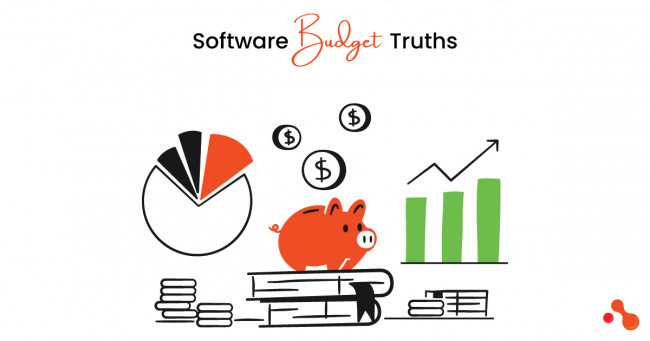In today's digital age, social media has become an integral part of people's lives. According to a survey by Statista, there are approximately 4.33 billion social media users worldwide. Social media is no longer just a platform for personal communication, but it has evolved into a powerful tool for businesses to reach out to their target audience and boost their sales.
This article will explore the benefits of social media marketing and provide tips on how to effectively use social media to boost your business.

What is Social Media Marketing?
Social media marketing is the process of using social media platforms to promote a business or product. The main goal of social media marketing is to increase brand awareness, drive traffic to a website, and ultimately boost sales.
Benefits of Social Media Marketing
Increased Brand Awareness: Social media is an excellent tool to increase brand awareness. By using social media, businesses can reach out to a larger audience and promote their products or services. This can help businesses build brand recognition and attract more customers.
Cost-effective Marketing
Social media marketing is a cost-effective way to promote a business. Most social media platforms offer free accounts that businesses can use to reach out to their target audience. Social media advertising is also more affordable compared to traditional advertising methods like TV, radio, or print media.
Improved Customer Engagement
Social media platforms offer businesses the opportunity to engage with their customers in real-time. By responding to customer inquiries or comments, businesses can create a personal connection with their customers and build trust.
Increased Website Traffic
Social media can be an excellent source of website traffic. By sharing links to their website on social media, businesses can drive more traffic to their website and improve their search engine rankings.
Tips for Effective Social Media Marketing
- Identify Your Target Audience: The first step in effective social media marketing is to identify your target audience. This will help you create content that resonates with your audience and drive more engagement.
- Create a Content Strategy: Once you have identified your target audience, the next step is to create a content strategy. This includes creating a content calendar, deciding on the type of content to post, and creating engaging and relevant content.
- Use Visuals: Social media users are more likely to engage with visual content. Use images, videos, and infographics to make your content more engaging and attractive.
- Engage with Your Audience: Engage with your audience by responding to their comments, answering their questions, and acknowledging their feedback. This will help build trust and a loyal following.
- Use Hashtags: Hashtags can help your content reach a larger audience. Use relevant hashtags to increase visibility and improve engagement.
- Analyze Your Results: Finally, analyze your social media results to see what is working and what is not. This will help you refine your strategy and improve your social media marketing efforts.
Identify Your Target Audience
The first step in effective social media marketing is to identify your target audience. Your target audience is the group of people who are most likely to be interested in your product or service. By identifying your target audience, you can create content that resonates with them and drive more engagement.
To identify your target audience, you should consider factors such as age, gender, location, interests, and behavior. You can also use social media analytics tools to gather data about your audience, such as their demographics and engagement levels.
Create a Content Strategy
Once you have identified your target audience, the next step is to create a content strategy. A content strategy is a plan for creating and publishing content that supports your business goals.
To create a content strategy, you should start by creating a content calendar. A content calendar is a schedule of the content you plan to create and publish on your social media platforms. It helps ensure that you have a consistent presence on social media and that you are posting content that aligns with your business goals.
When creating a content calendar, you should consider the following:
The type of content you want to post (e.g., images, videos, blog posts, infographics)
- The frequency of your posts
- The time and day of your posts
- The topics and themes of your posts
- The platforms you will post on (e.g., Facebook, Twitter, Instagram)
It's important to create content that is engaging, informative, and relevant to your target audience. You can use a variety of content types to keep your audience interested, such as images, videos, blog posts, infographics, and user-generated content.
Use Visuals
Visual content is more engaging and attracts more attention than text-only posts. When creating content for social media, use images, videos, and infographics to make your posts more attractive and engaging.
Images are a great way to grab the attention of your audience. Use high-quality images that are relevant to your content and your brand. You can use free stock images or create your own images using tools like Canva.
Videos are another effective way to engage your audience. You can create short videos that showcase your product or service, or create educational videos that provide value to your audience.
Infographics are a visual way to present data and information. They are great for explaining complex concepts in an easy-to-understand way. You can create infographics using tools like Canva or Piktochart.
Engage with Your Audience
Engaging with your audience is an essential part of social media marketing and to show job vacancies. By responding to comments, answering questions, and acknowledging feedback, you can build trust and establish a loyal following.
When engaging with your audience, be genuine and authentic.
Respond to comments and questions in a timely manner, and use a friendly and conversational tone.
You can also use social media to ask for feedback from your audience. This can help you improve your products or services and build a stronger relationship with your customers.
Use Hashtags
Hashtags are a great way to increase visibility and improve engagement on social media. A hashtag is a word or phrase preceded by the # symbol, used to categorize content on social media platforms.
When using hashtags, use relevant and specific hashtags that relate to your content and your brand. You can also create your own branded hashtags to promote your business and increase visibility.
Analyze Your Results
Finally, it's important to analyze your social media results to see what is working and what is not. This will help you refine your strategy and improve your social media marketing efforts.
You can use social media analytics tools to track your engagement, reach, and other important metrics. This will help you see which posts are performing well and which ones are not, so you can adjust your strategy accordingly.
Conclusion
Social media marketing is a powerful tool for businesses to reach out to their target audience and boost their sales.
By creating engaging and relevant content, using visuals, engaging with your audience, and analyzing your results, you can effectively use social media to promote your business and achieve your goals.
Identifying your target audience, creating a content strategy, and using hashtags are key components of successful social media marketing. By following these tips, you can take advantage of the benefits of social media marketing and grow your business.
















